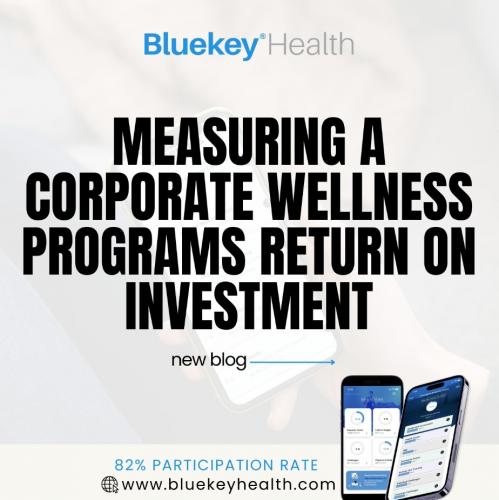Measuring A Corporate Wellness Programs Return On Investment.

Measuring a corporate wellness program’s return on investment (ROI) is crucial for determining its effectiveness and justifying continued or increased funding.
Here’s a step-by-step guide on how to calculate and measure the ROI of a corporate wellness program:
- Determine the Costs
- Track Key Metrics
- Calculate Savings
- Determine the ROI
- Consider The Qualitative Benefits
- Adjust For Confounding Factors
- Regularly Re-evaluate
- Leverage Feedback
- Compare with Benchmarks
Let’s dive into the detail of all 9 steps.
1. Determine the Costs.
Calculate the program’s total cost. This should include:
- Program implementation and administration costs.
- Costs of incentives or rewards.
- Any health screening or assessment costs.
- Costs of wellness events, workshops, and other related activities.
- Communication and promotional expenses.
- Tech or platform costs (if using wellness software or apps).
2. Track Key Metrics.
To Measure ROI, You’ll Need To Track Various Metrics Before And After The Implementation Of The Wellness Program:
- Healthcare Costs: This includes medical claims, pharmacy costs, etc.
- Absenteeism: Track the number of sick days or unplanned absences.
- Presenteeism: This measures reduced productivity while at work due to health issues.
- Turnover Rate: Check if the wellness program impacts employee retention.
- Worker’s Compensation and Disability Claims can decrease as employee health improves.
3. Calculate Savings.
- Healthcare Savings: Subtract post-program healthcare costs from pre-program healthcare costs.
- Absenteeism Savings: Calculate the cost savings from reduced absenteeism. This involves multiplying the reduced number of absentee days by the average cost per absentee day (considering wages, replacement costs, etc.).
- Turnover Savings: If there’s a noticeable reduction in turnover rate post-program, you can calculate savings based on reduced recruitment, training, and other onboarding expenses.
- Savings from Reduced Claims: Calculate the difference in worker’s compensation and disability claims before and after the program’s initiation.
4. Determine the ROI.
- Use the formula: ROI = (TotalSavings−ProgramCosts) / ProgramCosts
- Multiply the result by 100 to get a percentage.
5. Consider The Qualitative Benefits.
- Improved employee morale and satisfaction.
- Enhanced company image and attractiveness to potential employees.
- Increased employee engagement and commitment.
6. Adjust For Confounding Factors.
Make sure other interventions or changes in the company during the assessment period aren’t responsible for the observed differences. For example, this must be considered if healthcare costs dropped because the company changed its insurance policy.
7. Regularly Re-evaluate.
Wellness programs’ impact can change over time, so regularly assess your program’s ROI. This will also allow you to adjust the program based on what’s working and what isn’t.
8. Leverage Feedback.
Survey employees to gauge satisfaction and solicit feedback for program improvements. Their insights can offer qualitative and quantitative data to evaluate the program’s effectiveness further.
9. Compare with Benchmarks.
If available, compare your ROI with industry benchmarks or other companies’ wellness program ROIs to see how your program stacks up.
Bottom Line.
Remember, while ROI is an essential measure of a program’s effectiveness, it’s also crucial to
consider the broader impact on company culture, employee well-being, and overall business success. Wellness programs often offer intangible benefits that can be just as valuable as financial ones.
Request A Demonstration — Click Here!
Post Your Ad Here
Comments